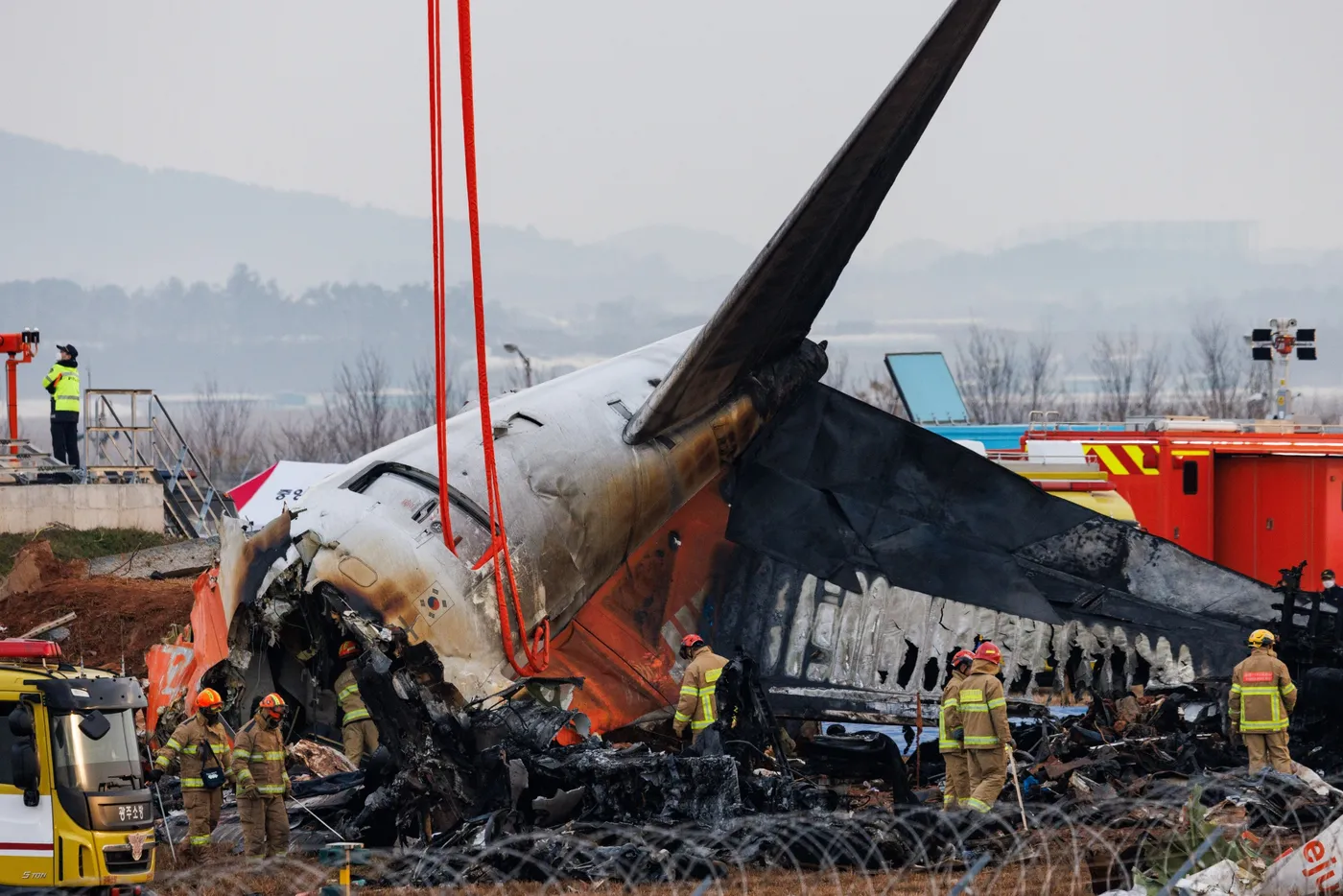On December 29th, 2024 a Jeju Air flight 2216, a Boeing 737-800, attempted a landing for no gear or flaps, and collided with a concrete embankment at the end of the runway at Maun International Airport in South Korea. Out of the 181 occupants on board, only 2 survived. But the question baffling the aviation industry, is how this could happen?
Before the plane attempted to make its landing, it is believed that the plane struck birds, according to video footage.
Jeju Air plane crash: What happens to an aircraft when a so-called bird strike occurs? | DW News
We believe that the birds took at an engine of the aircraft. Because of this bird strike, the plane committed a go around and landed form the opposite end of the airport. But, the plane landed with no way to slow down. Many, people wonder why a plane would ever land like this after a bird strike. Only 2 weeks before Jeju Air 2216, an American Airlines flight struck a bird over New York City and made a successful landing at JFK International Airport.
American Airlines flight diverts to JFK after apparent bird strike damages engine – ABC News
So, the bird strike does not explain why Jeju 2216, had no landing gear down or flaps. Some industry experts suspect that the pilots just forgot to deploy gear or flaps due to the tense situation. Something that has happened before to PIA flight 8303. Others suggest that the pilots shut off the wrong engine, cutting all power to the plane. You see, when a plane loses an engine, the first thing the pilots do is restart the engines, this requires turning them off entirely. But, if you do this to the wrong engine, nothing will function inside the plane. Unfourntaley we cannot be sure, because the flight recorder stopped recording 4 minutes before the incident, indicating a potential electrical failure.

While we investigate the action of the pilots, investigators are also wondering about the concrete wall placed at the end of the runway. This barrier was constructed to hold up antennas that control equipment that is used to assist pilots and landing their planes. It has been discovered that this barrier should not have been there. The Korea Airport Corporation said that the barrier was too close to the end of the runway. It also been revealed that there was not a long enough runway safety area for over running planes. Apparently, this airport would have never been legal in the United States and violates ICAO (International Civil Aviation Organization) guidelines.
This investigation is still ongoing, and recently the South Korean police raided the Jeju Air headquarters. Counite to follow my author page as we follow this investigation, and if you have any questions please ask in the comments.


why is this post so long